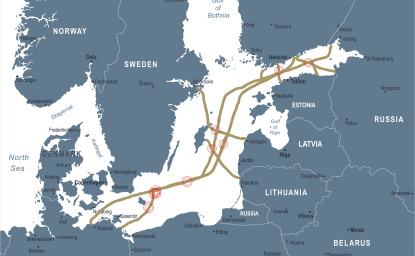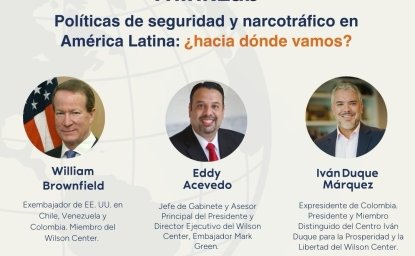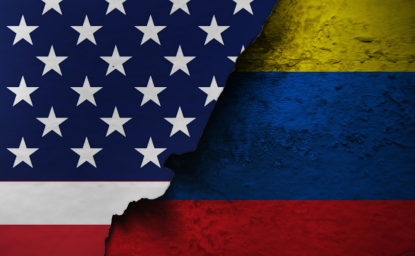The following commentary is based on comments delivered during the Wilson Center’s February 17, 2021 program: US Counter-drug Policy in the Western Hemisphere: Is it Working?
Over the past decade, the Mexican drug trade has changed considerably. In terms of drug production, there has been a significant shift from plant-based substances to synthetic substances. Criminal organizations in Mexico now engage in diverse activities and are no longer exclusively involved in the trafficking of drugs. Moreover, the political realities in Mexico City and Washington D.C. hardly resemble those that were present at the start of the Mérida Initiative. The change in landscape demands reconsideration and reframing of US - Mexico security cooperation in order to formulate appropriate policy solutions.
Changes in market preferences
While the century old marijuana trade between Mexico and the United States has not disappeared entirely, it has certainly declined. In the last decade, eradication of marijuana fields has decreased by almost 80%. Seizures of marijuana have also declined, both within Mexico and at border crossings. There is now evidence that more marijuana is exported from the United States into Mexico than the reverse due to state legalizations. Similarly, poppy and heroin field eradications and seizures have been decreasing. As fentanyl replaces heroin in US markets, prices for heroin and opium gum have been falling. It is imperative that law enforcement officers and policymakers are aware of these trends which suggest significant changes in the US drug market from 15 years ago.
Changes in criminal structure
From the criminal organization side, the landscape has become far more fragmented and horizontally aligned than was the case during the first decade of this century. At the time of the Mérida Initiative’s launch in 2008, there were four to six dominant criminal organizations involved in large-scale trafficking operations to the United States. There now are very few of these “old-style” cartels remaining. Modern criminal organizations vary greatly in size and activities; some are involved in drug trafficking, others provide auxiliary support to drug trade, and others are not involved in drugs at all. The COVID-19 pandemic has also created significant changes in the structure of criminal organizations with some groups digitizing their operations. These changes, including the use of cryptocurrency platforms for payments, have made it more difficult for law enforcement agencies to track these organizations and measure their success in halting their operations.
Changes in bilateral security initiatives
Changes in market preference and the structure of criminal organizations have challenged many of the traditional pillars of US-Mexico security cooperation. The so-called kingpin strategy, in which the US and Mexico focused on the arrest and extradition of the heads of major criminal organizations, has been questioned due to its sometimes-destabilizing effect, which can prompt an increase in criminal violence in surrounding communities. Furthermore, the López Obrador administration has expressly stated that going after kingpins is not a priority.
There have also been major shifts in the structure of Mexican law enforcement. At the outset of the Mérida Initiative, the government sought to rely on the military as a temporary law enforcement tool while it developed police capabilities. The current administration however, has made the military a key part of law enforcement. This is especially evident in the case of the National Guard: founded in 2019 as a national police force, almost 80% of National Guard members are active military personnel. The National Guard has been a key tool of the López Obrador administration, with the president even entrusting it with matters outside of national security, such as construction, and, potentially, COVID-19 vaccine distribution.
Security cooperation between Mexico and the United States is weakening. President López Obrador has repeatedly stated his indifference for the Mérida Initiative, and has expressed his preference for resetting cooperation with the United States. The arrest of General Salvador Cienfuegos in the United States, and his subsequent clearing of charges in Mexico, has created further tension and deepened the Mexican military’s suspicion of the US Drug Enforcement Administration (DEA). In response to Cienfuegos’ arrest, in December 2020 Mexico's Congress amended a national security law to require foreign agents, including DEA officials, to register with and report their findings to the Mexican government. This legal framework and the profound distrust generated by this new provision will make certain forms of cooperation, such as joint-operations, very difficult.
Finally, momentum for broad-based institutional reform has stalled within Mexico. Current attorney general Alejandro Gertz Manero has repeatedly and explicitly stated his opposition to the criminal justice reform of 2008. The federal government has also stalled efforts to reform local and state police forces, which are the core of Mexican law enforcement. For example, funds devoted to institutional police reform at the local level have been eliminated.
Looking forward
Considering the changes across the bilateral security landscape over the past decade, there is a keen need to reassess US-Mexico security cooperation. As a first step, the United States should be willing to reframe the Mérida Initiative to accommodate the change in Mexico’s political dynamic. Rebranding the agreement and revising its scope could permit it to shed its “Calderonista” image and garner the support of the López Obrador administration. Along with rebranding, a new emphasis on social and economic development is also necessary to reduce tensions over security concerns.
Given the changes in the types of drugs in high demand, it is crucial that policymakers reassess the measurement of success and failure in counter-narcotic strategy. There is a need to focus less on the volume of drugs seized, and more on the harm caused. This means prioritizing the end results of the drug trade, by assessing violence and overdose figures, rather than focusing on procedural indicators, such as eradication and seizures, which have been the mainstays of counter-narcotics policy for many decades.
On both sides of the border, political arguments have been stuck in the 2000’s despite the drastic change in the landscape in recent years. In order to fight the drug trade and its impacts, we must reassess and rebuild United States-Mexico cooperation to address the challenges of this decade.
Author


Mexico Institute
The Mexico Institute seeks to improve understanding, communication, and cooperation between Mexico and the United States by promoting original research, encouraging public discussion, and proposing policy options for enhancing the bilateral relationship. A binational Advisory Board, chaired by Luis Téllez and Earl Anthony Wayne, oversees the work of the Mexico Institute. Read more

Explore More
Browse Insights & Analysis
The OSCE is a Good Value for America



